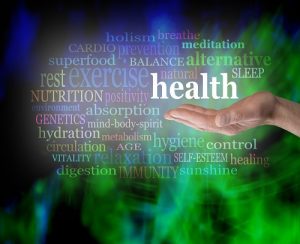 Written by Veronica Turner
Written by Veronica Turner
Living with back pain can be a daunting experience; that’s where various effective options come into play to bring relief. Ranging from physical therapy, yoga, and pilates to locally injected pain relievers and self-care practices, each approach carries unique benefits to combat this ailment.
This variety is especially important considering the complexities of back pain, as symptoms can occur due to numerous reasons, including injury, aging, surgery, or chronic conditions.
10 Options for Dealing With Back Pain Before and After Surgery
By exploring these options in-depth, we aim to empower you with knowledge so you can be proactive in managing discomfort and improve your overall quality of life substantially.
-
Physical Therapy
Conducted by trained therapists, physical therapy incorporates a variety of structured exercises designed to stretch and strengthen back muscles. Focusing on key areas responsible for supporting your spine, physical therapy can alleviate pain by improving stability and posture.
It’s important to note that the exercises are often tailored to cater to individual needs, meaning there’s little chance you’ll get hurt. Regularly engaging in these activities enhances long-term recovery and helps mitigate future relapse of back pain while accelerating healing after surgery.
-
Yoga and Pilates
Embracing yoga and pilates can be a beneficial approach to managing back pain. These practices bring a holistic perspective that emphasizes the harmony of the whole body. Yoga, for instance, uses specific poses that help alleviate back pain by stretching the muscles.
On the other hand, pilates mainly concentrates on building core strength—a critical component for supporting your spine. With regular practice, both options can provide long-lasting relief from chronic back discomforts and support overall muscular health as long as you’re careful.
-
Massage Therapy
Massage therapy has been identified as a powerful tool in relieving back pain. The simple act of applying pressure to affected muscles aids in reducing tension, improving blood circulation, and promoting relaxation. Increased circulation can expedite healing after back surgery.
Session frequency will depend on the severity of the pain, but even occasional massage appointments can bring about noticeable improvements. Licensed therapists can utilize various techniques depending on your precise need, making this approach versatile.
-
Self-Care Practices
Self-care practices play a vital role in managing back pain, and they can be as simple as daily lifestyle changes. Healthy habits such as maintaining a balanced diet, resting adequately, avoiding heavy lifting, and incorporating regular exercise are beneficial for your back.
Being proactive about managing stress through various techniques can improve your overall well-being, which indirectly impacts your health. Integrating these habits into your routine aids in effective pain management post-back surgery and contributes positively to long-term recovery.
-
Pain Medication
Non-prescription (over-the-counter) pain medications/drugs like NSAIDs (Non-Steroidal Anti-Inflammatory Drugs) or acetaminophen can be handy for controlling mild to moderate symptoms. They function by reducing inflammation and blocking pain signals, respectively.
However, with more serious or chronic conditions, stronger prescription medications may be necessary. These should always be used under the supervision of a healthcare professional. Pain medication is often most effective when combined with other treatments.
-
Heat and Cold Treatment
Heat and cold treatment is a readily accessible and often effective method to manage back pain. Applying heat, using tools like electric heating pads or warm compresses, helps soothe stiff or achy muscles by improving blood circulation. It promotes healing and can aid mobility.
Conversely, cold treatment with ice packs reduces swelling and numbs sore areas to dull pain. The key is to alternate between the two therapies for optimal results. This technique is usually best used for temporary relief of minor back pains or post-exercise soreness.
-
Topical Analgesics
Applied directly onto the skin, topicals or ointment products provide localized relief from pain and inflammation. They work by producing a warm or cool sensation that distracts you from the pain or by delivering medication directly to the painful area for transdermal absorption.
Topical Analgesics come in various forms, such as gels, sprays, and patches, and are typically used in conjunction with other treatments. While they may not solve all back pain issues, especially if they’re chronic, they can provide much-needed temporary reprieve in daily life.
-
Locally Injected Pain Relievers
Injected pain relievers are administered directly to a specific area of the body that’s generating intense discomfort, such as near-strained muscles or pinched nerves. For instance, conditions like sciatica that involve nerve pressure often respond well to these injections.
This approach can swiftly deliver higher concentrations of medication to where it’s most needed, providing rapid relief and reducing the side effects associated with systemic distribution in oral medication. This method should always be performed by a trained healthcare professional.
-
Chiropractic Care
Chiropractic care is another important therapeutic intervention to consider when dealing with back pain. A chiropractor, trained in spinal manipulation and alignment, can help pinpoint the source of your pain before applying specific adjustments designed to address irregularities.
Studies have shown that these treatments can effectively alleviate discomfort in the lumbar region, promoting mobility and enhancing overall quality of life. This approach usually works best as part of a comprehensive treatment plan involving physical therapy or exercise programs.
-
TENS Unit
The TENS (Transcutaneous Electrical Nerve Stimulation) Unit is a non-invasive device often used in pain management, including backaches. It functions by delivering small electrical currents through electrodes that are adhered to the skin over problem areas.
These currents interfere with the body’s pain signals, persuading your nervous system to either diminish or entirely block these signals, thereby reducing the sensation of pain. This compact device is especially handy as its portable nature allows for home use and immediate relief.
In Conclusion…
Back pain may be a common issue, but you don’t have to endure it silently. There are numerous effective options available today to manage and relieve your discomfort. It’s crucial to remember that every person is unique; what works for one might not work for another.
Author Bio.
Veronica Turner is a health and lifestyle writer with over 10 years of experience. She creates compelling content on nutrition, fitness, mental health, and overall wellness.
Please also review AIHCP’s Health Care Life Coach Certificate program and see if it meets your academic and professional goals. These programs are online and independent study and open to qualified professionals seeking a four year certification.

 Written by Veronica Turner
Written by Veronica Turner

 By: Tara Tonsetic, CHC
By: Tara Tonsetic, CHC

